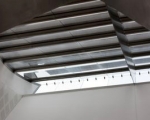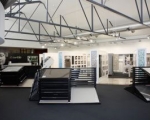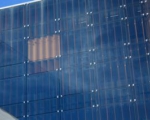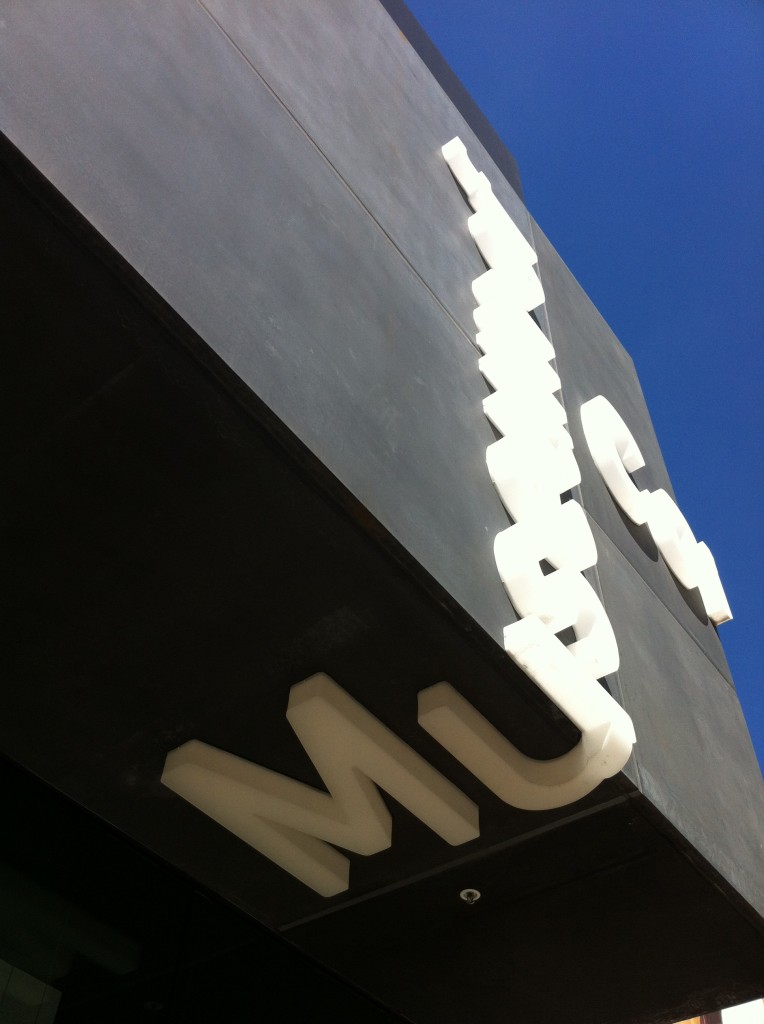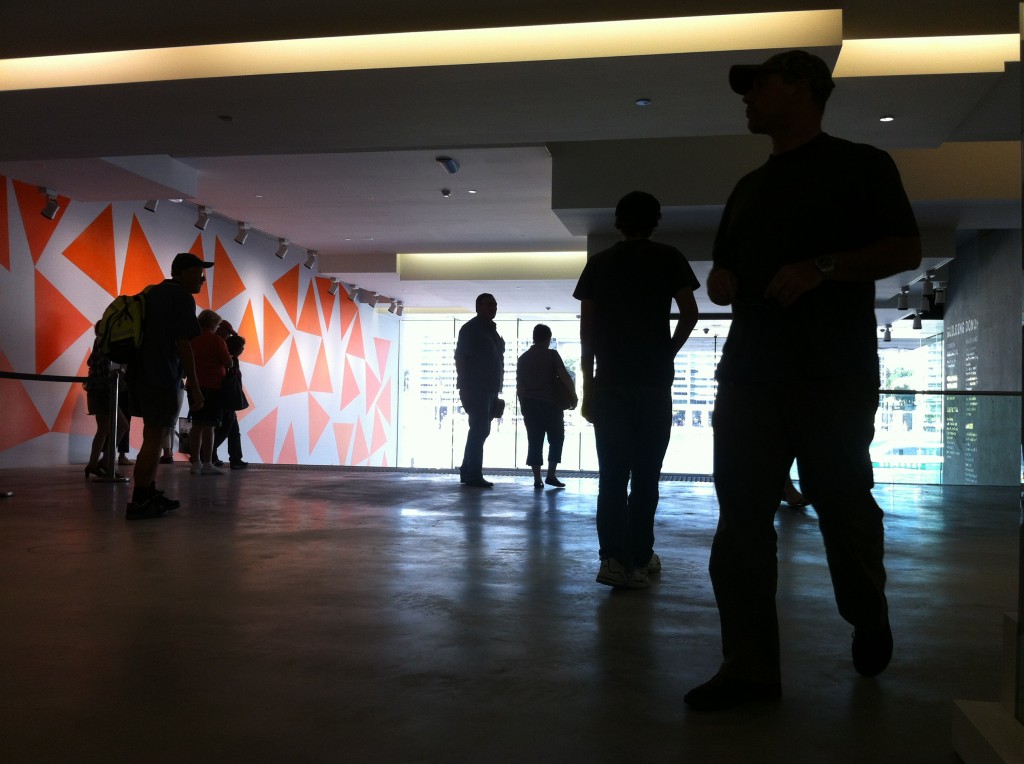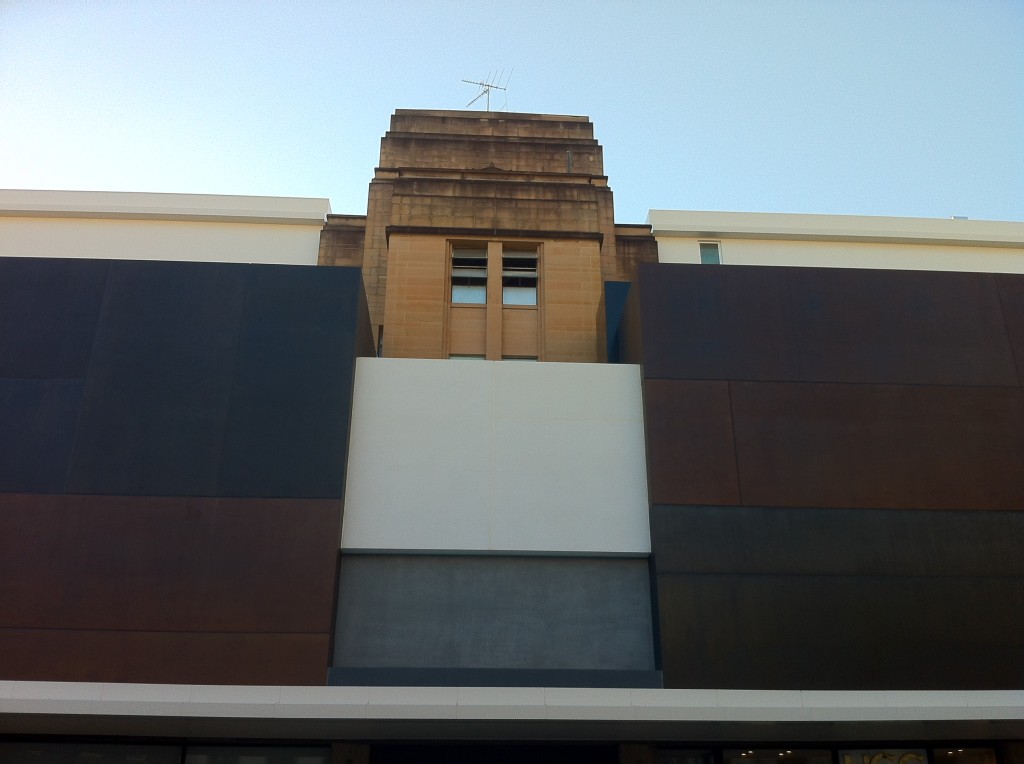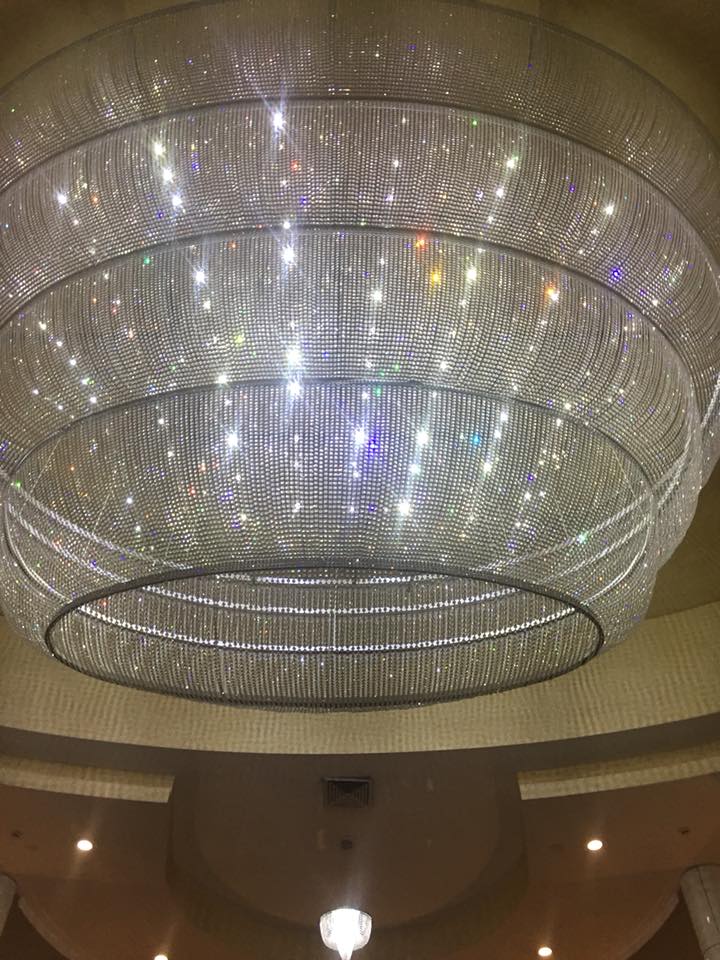
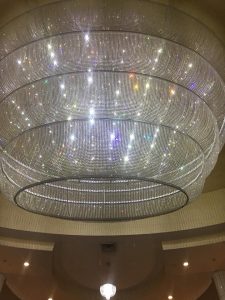
The tyranny of chandelier lighting,
if your not lighting the prisms, then your not refracting light, then the chandelier won’t appear to sparkle as it’s meant too.
See how the bottom of the luminare looks dull without sparkle?
Chandeliers are Usually positioned in dominant viewing positions like high ceilinged lobbies or in the void above staircases. As a feature designed to attract the eye and impress the viewer with a feeling of grandeur.
Direct lighting is required to enhance the sparkle and glitter as the light is refracted from prisms. This is especially a problem now with the influx of LED lighting into the hospitality sector. Without proper specification the wrong LED luminaire may be used. LED are renowned for luminance and not illuminance.
If your planning to hang a chandelier you need to be prepared to thoroughly research the luminaries used to illuminate the prisms
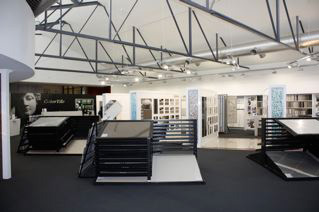
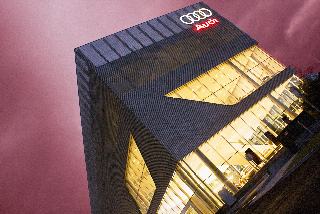
Lighting is a design activity, like engineering or architecture where science and art are combined.
In interior lighting, many roles overlap, the science and engineering aspects include mechanical, electrical and HVAC and the art and design most notably in the architecture and interior design. Interior lighting is compelled to achieve standards applied in AS/NZS 1680, but these are not wholly prescriptive and allow for the designer to achieve acceptable results through many approaches.
Achieving the right numbers isn’t that important, the most important aspect is to get the appropriate appearance for the design.
Early 1900 commercial and residential architecture was developed to maximise daylight penetration. Early Town planning was often based on access to daylight and pre dated the grid city planning adapted for most cities today. Building footprints were shaped for a large perimeter exposing greater areas to sun and sky. With the development of fluorescent lighting, (and other developments like lifts and air-conditioning etc) building design dramatically changed. Most notably by altering ceiling heights (lower) and changing window size (smaller). These economies continue today and continue to be major drivers in the design of commercial spaces.
There was a lack of understanding in the roles windows play in people’s comfort and their productivity in the workplace. There is a big difference between the role of windows as a light source and their function as a dynamic element in the design (passing of time stimuli etc). Office design continues to evolve with open plan still the most popular. A design objective allowing access to natural light and maintaining people’s view of the outside world.
Even thought the heat load of sunlight is comparable to incandescent lighting the issue is controlling its abundance, you might need 320 lux at the table top but the sunlight coming through a window might exceed 10000 lux.
Attempting to harness sunlight can be compared to trying to get a drink from a fire hydrant. Overseas countries have now legislated for minimum levels of daylight. As a light planner it is a prerequisite that I display a love and respect for the subject. To be a really good designer, I must acknowledge the whole subject and its context and must complete rigorous task analysis and design the lighting to specifically to suit each project.
Design Activity Images
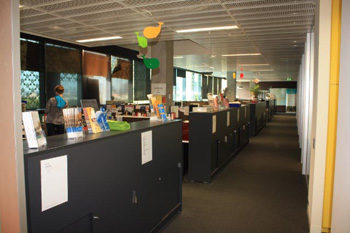
02.04.2012
Office Lighting
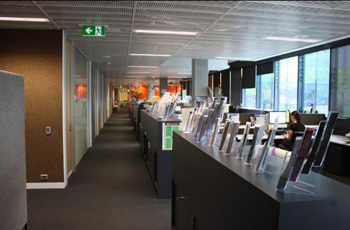 Flourescent lighting has been the most powerful force in Architectural design of the workplace since the second world war.
Office Lighting Images
Flourescent lighting has been the most powerful force in Architectural design of the workplace since the second world war.
Office Lighting Images
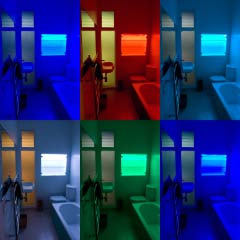
02.04.2012
Residential Lighting
Project:
Residential Interior Bathroom Fitout
 Our latest residential interior is a contempory bathroom renovation in Sydney. A complete modernisation was called for.
As with everything new in architecture the client asked for more natural light. By determining the daylight factor of the existing windows it was calculated that there would be an increase of daylight available with a floor to ceiling aperture.
Rather than filling the remaining window aperture it was decided to fill it with a remotely switched light box. Constructed wth the same glass as the exterior window, the cabinet is fitted with a waterproof RGB LED strip controlled by a movement detector above the entry.
As you enter the bathroom the light switches on automatically, flooding the room with soft colored light, great for young children using the bathroom late at night. Glass shelves allow light to reflect back off the floor of the cabinet.
The end result is a bathroom that can be lit for any mood.
In this bathroom interior the lighting design combines LED down lights, lighting horizontal surfaces, with an RGB LED hidden in a glass cabinet and activated by a remote movement detector for general ambience. This luminaire then fills the white tiled bathroom with washes of colour. The strip LED is activated remotely and can be controlled by a hand held remote, any RGB colour mix can be achieved.
Our latest residential interior is a contempory bathroom renovation in Sydney. A complete modernisation was called for.
As with everything new in architecture the client asked for more natural light. By determining the daylight factor of the existing windows it was calculated that there would be an increase of daylight available with a floor to ceiling aperture.
Rather than filling the remaining window aperture it was decided to fill it with a remotely switched light box. Constructed wth the same glass as the exterior window, the cabinet is fitted with a waterproof RGB LED strip controlled by a movement detector above the entry.
As you enter the bathroom the light switches on automatically, flooding the room with soft colored light, great for young children using the bathroom late at night. Glass shelves allow light to reflect back off the floor of the cabinet.
The end result is a bathroom that can be lit for any mood.
In this bathroom interior the lighting design combines LED down lights, lighting horizontal surfaces, with an RGB LED hidden in a glass cabinet and activated by a remote movement detector for general ambience. This luminaire then fills the white tiled bathroom with washes of colour. The strip LED is activated remotely and can be controlled by a hand held remote, any RGB colour mix can be achieved.
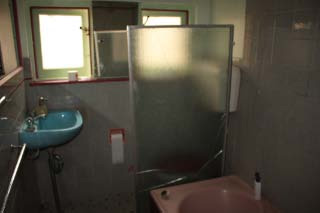 This picture gives an indication of the primary colour washes available
The pre-renovation bathroom indicating how the window aperature was enlarged and second window remodelled into an light box.
This picture gives an indication of the primary colour washes available
The pre-renovation bathroom indicating how the window aperature was enlarged and second window remodelled into an light box.
